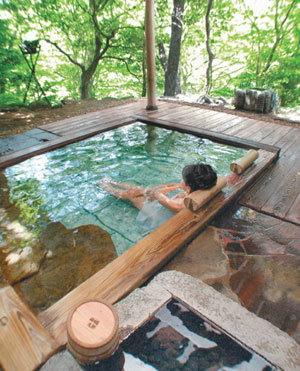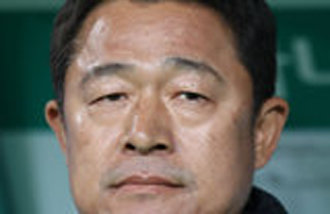Spirit of Mt. Fuji

The majesty of Mount Fuji, the symbol of Japan, is best seen from Hakone in Ganagawa Prefecture. This popular tourist destination is located amid mountains and valleys.
In Hakone, the best place to see Mt. Fuji is a lakeside called Ashino. On clear and windy mornings, the scene reflected on the waters surface is Japans best landscape attraction.
As a mountain tourist destination, Hakone has a variety of conveyances for sightseeing: mountain trains, mountain buses, ropeways and cable cars. There are ships on the lake as well. The main sightseeing route is a valley connecting Odawara train station to Mt. Soun and beyond. Odawara Station, which is on the railroad extending to Tokyo, is the main rail terminus of Hakone.
Ryokan Musashinobetkan, a traditional Japanese inn, is located in the middle of the valley, Miyanosita. Miyanosita is a 600-year old hot springs village. In front of the entrance of the town lies Japans National Highway 1, reflecting how much the village was cherished by people in Tokyo.
Musashinobetkan is located on the steep slide of the mountain and it is hard to get there by car. Though it opened in 1968, it is still as clean as if it opened yesterday. I arrived at 10 oclock in the morning when guests were checking out. Okami (the female owner and the general manager), and Nakai-san (a helper) were outside the entrance. They politely bowed to their guests and waved endlessly until the car carrying their guests disappeared. Every Ryokan has polite workers, but it seemed to be more sincere here. This could be because of the efforts to maintain and respect the traditional service culture and dignity of Ryokan here.
Though it was a traditional Ryokan, Ota Narumi, the okami of this Ryokan, was young. In the lobby, sofas were facing a large screen that showed a video clip of Mt. Fuji. The majestic view of the mountain filmed from the air was much more impressive than we expected. All the floors are covered with Tatami (Japanese traditional flooring) as well. Thats so, you dont have to wear slippers. You can just walk around with bare feet. Theres less noise and its more comfortable, she said.
Musashinobetkan is in a perfect location; an outdoor bath is located deep inside the woods where you dont have to concern yourself about other people. Only after looking at the terrain did I realize the meaning of the bath of the four seasons which was inscribed on the top of the Ryokans name. The bath remains open in all seasons so that guests can enjoy the changing seasons of nature as they bathe.
There are nine baths in the forest. Two are big baths, four are for guest rooms, and the rest are natural hot springs. I visited the Gunpu bath and climbed a set of narrow stairs with roofs behind the Ryokan building and found a small hut in the woods. The bath under the roof of the hut was ㄱ-shaped and the surroundings were all green. The dark forest shadows were reflected beautifully on the water. A hinoki (Japanese cedar) bathtub was well matched with the natural surroundings.
A guidebook says the temperature of such baths should be 41 degrees Celsius. It is a memorable number because it is the line between rest and tension. One higher degree will indicate more stress than rest. Below that temperature, a baths capacity to relax our body is maximized. The guidebook also talks about the origin of Japans hot springs. There is a picture showing a sign that reads the 114th hot spring with a symbol for natural baths, meaning that this bath is certified by the Japanese Bath Association. It also explains that the water comes from far beneath the ground where it is heated by magma five kilometers below nearby Mt. Soun. The 69-degree Celsius water is a kind of carbonated spring, which said to be effective in treating womens diseases, skin disorders and neuralgia.
We changed into yukata (Japanese traditional clothing) after taking a bath. It is a unique tradition that helps one relax. At this point, it is natural to feel thirsty for alcohol.
Yoitsukite is Japanese for a place for drinking. When I sat down, the okami talked of many things and offered me a glass of alcohol, one of the bars 18 homemade alcohols. The okami offers the best alcohol for guests based on their health and body constitution. The green scenery outside an eye level window brings peace to my mind. It is a nice place where you can rest and be pampered.
In the evening, a sumptuous meal is prepared for guests on a table in a tatami room. You dont have to worry about meals in such a luxurious ryokan. The food exceeds expectations. What you do have to worry about is not tasting all the delicacies. The dinner includes 14 kinds of dishes, such as fresh abalone, slightly scalded tofu, and a variety of wines.
The ryokan has 21 rooms and 20 employees.
summer@donga.com
Headline News
- Iran blames US sanctions for helicopter crash that killed president
- Pres. Yoon vetoes investigation into death of marine
- “Croatia Holds a Business Forum in Seoul…Looking forward to the development of trade relations”
- Samsung names new chief for semiconductor business
- Seoul City plans to expand welfare benefits







